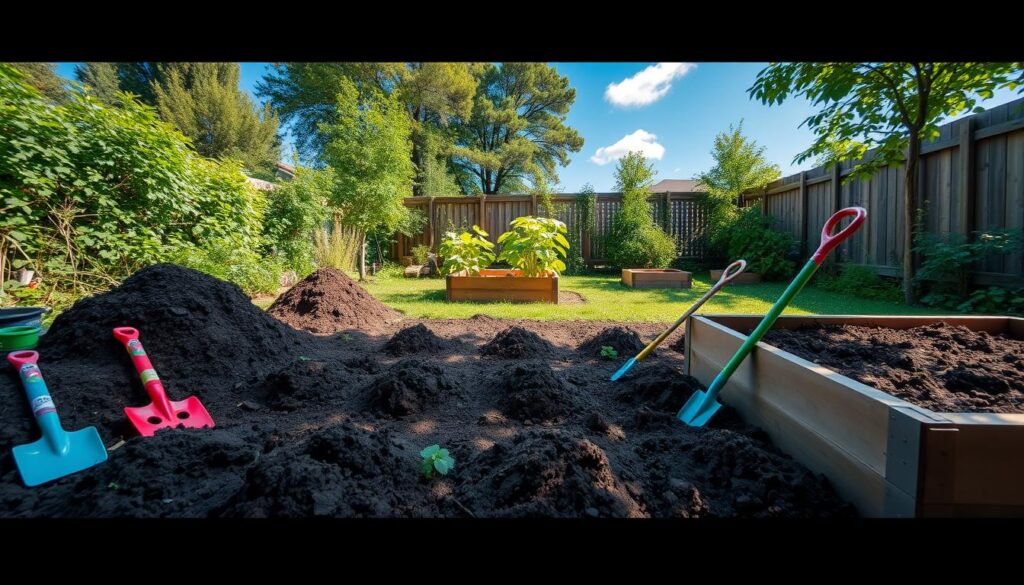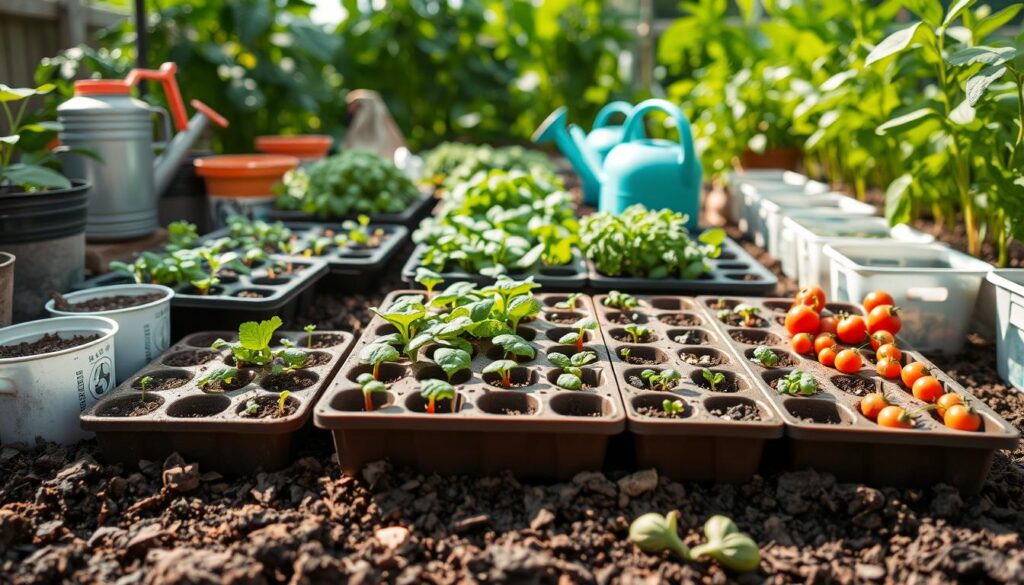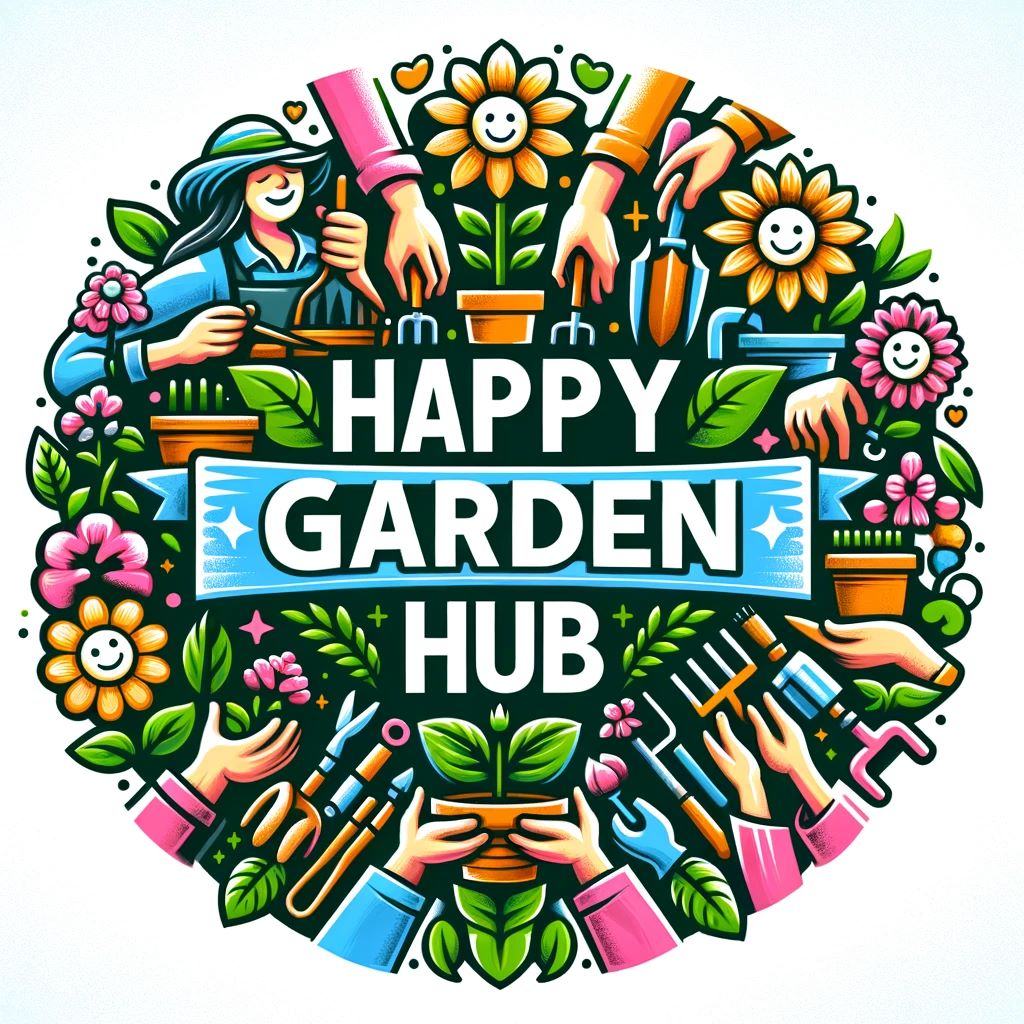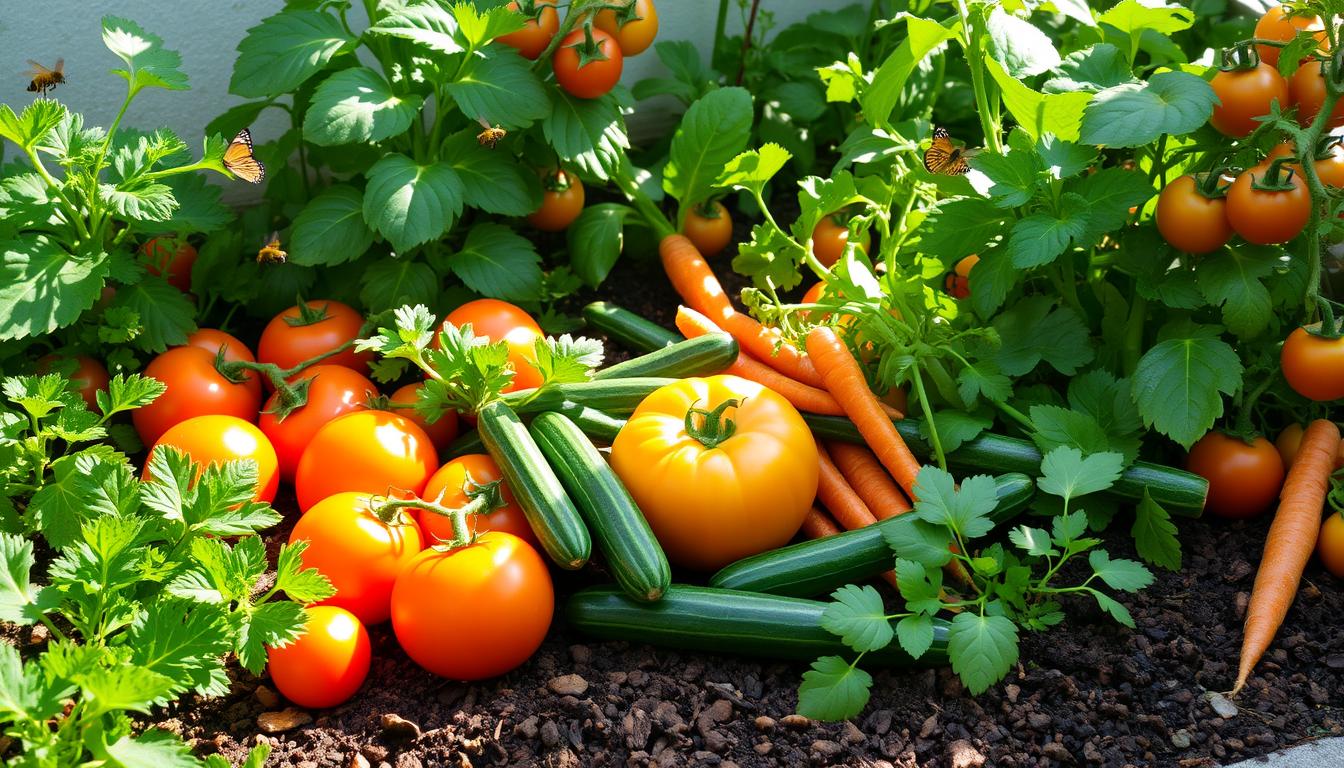This post contains affiliate links.
Ready to unleash your inner green thumb? You’re in for a treat! Homegrown vegetables are not just a trend; they’re a delicious revolution right in your backyard. With CaliKim’s expert guidance, even the most novice gardeners can transform their outdoor spaces into thriving vegetable patches.
Imagine plucking sun-ripened tomatoes from your own vines or harvesting crisp lettuce for tonight’s salad. It’s not just a daydream – it’s totally achievable! CaliKim, with her whopping 500,000+ YouTube subscribers, proves that organic gardening isn’t rocket science. Her approach simplifies vegetable cultivation, making backyard farming accessible to all.
Don’t let limited space deter you. Whether you’ve got a sprawling yard or just a tiny balcony, there’s room for homegrown goodness. From compact pea varieties to container-friendly chillies, you’ll find options that fit your lifestyle. And the best part? You don’t need a fortune to start. With prices ranging from $9.49 to $26.99 for essential gardening tools, you can kickstart your veggie adventure without breaking the bank.
So, are you ready to dig in and savor the fruits (or veggies) of your labor? Let’s get growing!
Key Takeaways
- CaliKim’s YouTube channel boasts over 500,000 subscribers, proving organic gardening’s popularity
- Homegrown vegetables are possible in any space, from large yards to small containers
- Easy-to-grow options include bush tomatoes, early potatoes, and cut-and-come-again salad leaves
- Gardening tools are affordable, with prices ranging from $9.49 to $26.99
- Beginner-friendly crops like ‘Boltardy’ beetroot and ‘Defender’ F1 courgettes offer high success rates
- Organic vegetable cultivation can be low-maintenance and highly rewarding
The Joy of Cultivating Your Own Edible Garden
Imagine picking fresh veggies from your own garden. It’s not just a dream! Urban farming is becoming popular, leading to self-sufficiency and sustainable living. Whether you’re experienced or new, growing your own food is rewarding and simple.
Benefits of Growing Your Own Produce
Homegrown veggies taste better and are healthier. They’re also free from harmful chemicals. Plus, you’ll save money on groceries. A £2 seed packet can give you hundreds of tomatoes, unlike a £5 nursery plant.
Overcoming Common Gardening Hesitations
You don’t need acres of land to garden. Even those in apartments can join the urban farming movement. Use vertical gardens, wall-mounted planters, and hanging baskets to save space. For the smallest spaces, hydroponic systems let you grow lettuce all year.
CaliKim’s Approach to Simple Organic Gardening
CaliKim believes in starting small and growing big. Focus on healthy soil, use seeds to save money, and set up smart irrigation. Her advice makes sustainable living easy for everyone, no matter how busy or space-constrained.
| Gardening Method | Space Required | Difficulty Level | Yield Potential |
|---|---|---|---|
| Traditional Garden | Large | Moderate | High |
| Container Garden | Small | Easy | Moderate |
| Vertical Garden | Minimal | Easy | Moderate |
| Hydroponic System | Minimal | Challenging | High |
Ready to start your kitchen garden adventure? It’s waiting for you!
Getting Started: Preparing Your Garden Space

Ready to start backyard farming? Let’s get your garden ready for success! First, pick the perfect spot for your kitchen garden. Your veggies need 6-8 hours of sunlight each day to grow well.
Then, map out your garden beds. Think about the size of your space and the veggies you want to grow. Some plants need more room than others. If you have a small area, try container gardening.
Here’s a quick checklist to get you started:
- Choose a sunny spot (6-8 hours of direct sunlight)
- Test your soil pH (aim for 6.0-7.0)
- Plan your garden layout
- Prepare the soil (add compost if needed)
- Set up an irrigation system
Don’t forget about edible landscaping! It’s a fun way to make your yard beautiful and useful. Mix colorful veggies with ornamental plants for a stunning garden.
Gardening is a journey. Your first try might not be perfect, but you’ll learn and grow with each season. So grab your gloves and let’s start your kitchen garden adventure!
Soil Preparation: The Foundation of Healthy Homegrown Vegetables
Ready to start organic gardening? The key to a great harvest is in the soil. Think of it as preparing a table for your plants. It’s all about making a rich environment for your veggies to grow.
Building nutrient-rich soil
Your garden needs a balanced diet. Add compost to make the soil full of nutrients. Aim for a pH of 6 to 7 for most veggies. Happy soil means happy plants!
Mapping out garden beds
Planning your garden is like playing Tetris with plants. Give roots space to grow in in-ground gardens. Most veggies need 8+ hours of sun. If space is tight, use containers at least 10 inches wide and 12 inches deep.
Composting basics for beginners
Composting is nature’s recycling. Mix ‘browns’ (carbon-rich materials) with ‘greens’ (nitrogen-rich scraps), add water, air, and patience. You’ll get black gold for your garden. It’s like cooking a gourmet meal for your garden.
“The greatest fine art of the future will be the making of a comfortable living from a small piece of land.” – Abraham Lincoln
Good soil is key to organic gardening. Follow these tips to grow a thriving veggie garden. Happy gardening!
Selecting the Right Vegetables for Your Garden
Ready to explore easy-to-grow vegetables? It’s a fun journey! Choosing the right veggies for your garden is like picking the perfect outfit. It’s all about finding what fits you best. Whether you love heirloom varieties or are new to edible landscaping, there’s a veggie for everyone.
Let’s look at the seasons. Warm-season veggies love the sun and grow best in warm weather. They can’t handle frost, so wait until spring is fully warm to plant them. Cool-season vegetables, on the other hand, are tough and grow well in cooler temperatures.
Now, let’s talk about when to harvest. Here’s a quick guide to some popular veggies:
- Snap beans: 50-70 days
- Tomatoes: 60-95 days
- Cucumbers: 50-100 days
- Sweet peppers: 60-95 days
- Carrots: 30-80 days
- Spinach: 40-50 days
Remember, veggies need lots of sunlight. Your garden should get at least 6 hours of sun a day. And if you’re short on space? No problem! Many veggies grow well in containers, perfect for city gardens or beginners.
Start small. Choose 5-6 of your favorite veggies for your first year. This way, you can enjoy gardening without feeling overwhelmed. You might even find a new favorite, like spaghetti squash or other heirloom varieties!
From Seed to Sprout: Starting Your Vegetable Garden
Starting your vegetable garden with seeds is a great way to begin. It lets you choose from a wide variety and can save money. Let’s explore how to grow your seeds into healthy plants.
Seed Starting Techniques
First, test your soil and find out your growing zone. This helps pick the right vegetables and care for them. Use eco-friendly LED grow lights for 12 hours of light a day indoors. This helps avoid pests.

Transplanting Seedlings
Before moving seedlings outside, harden them off. Do this by gradually exposing them to outdoor conditions over two weeks. Transplant when the soil is 65 to 70 degrees, usually in April or June. Make sure each seedling has enough space to grow.
Direct Sowing Methods
Some veggies like melons and squash do best when directly sown. Use frost blankets to warm the soil. For climbing plants, like cucumbers, set up trellises for support and easy picking.
| Planting Method | Vegetables | Planting Time |
|---|---|---|
| Indoor Start | Tomatoes, Peppers | 6-8 weeks before last frost |
| Indoor/Outdoor Start | Broccoli, Cabbage, Kale | 8-12 weeks before last frost |
| Direct Sow | Melons, Squash, Corn | After last frost date |
Learning these methods will help you grow a vibrant organic garden. It will be full of tasty vegetables and unique heirloom varieties.
Container Gardening: Growing Vegetables in Limited Spaces
Want to start urban farming but have little space? Container gardening is the answer! It lets you grow your own veggies on balconies, patios, or indoors.
Container gardens are great for beginners and those with busy lives. They’re simpler to care for than regular gardens, with fewer pests and weeds. You can place your pots anywhere with enough light and water.
Choosing the right container size is crucial. Tomatoes and peppers do well in 5-gallon pots. Dwarf varieties and leafy greens prefer 1 to 2-gallon containers. Make sure your pots are 6 to 8 inches deep for healthy roots.
Sun-Loving Veggies
Most fruit-bearing plants need lots of sunlight. They should get 6 to 8 hours of direct sun daily for a good harvest. Leafy greens, however, only need 3 to 5 hours of sunlight.
Soil and Feeding
Use potting mix instead of garden dirt. It’s lighter and drains better, keeping your plants healthy. Add organic fertilizer or compost to feed your veggies well.
| Plant | Container Size | Days to Harvest |
|---|---|---|
| Tomatoes | 5-gallon | 90-130 |
| Beans | 2-gallon | 45-65 |
| Cucumbers | 5-gallon | 50-70 |
Container gardening is more than just growing food; it’s a sustainable lifestyle. It’s a small step that makes a big difference. So, grab some pots, choose your plants, and start growing!
Homegrown Vegetables: Easy-to-Grow Varieties for Beginners
Ready to start your veggie garden? You’re in for a treat! Growing your own produce is rewarding and easier than you might think. Let’s explore some easy-to-grow vegetables perfect for beginners.
Bell Peppers: A Colorful and Nutritious Choice
Bell peppers add color to any garden. They love full sun and well-draining soil. Plant them after the last frost to avoid temperature drops.
As they mature, watch them transform into a rainbow of colors – red, orange, yellow, purple, and even chocolate brown!
Tomatoes: The Quintessential Home Garden Crop
Tomatoes are a must-have for vegetable cultivation. They thrive in heat and can be grown in containers or garden plots. For best results, start tomato seeds indoors about six weeks before the last frost date.
Once outside, they’ll need at least 8 hours of sunlight daily and regular watering. Cherry tomatoes are especially suited for container gardening.
Zucchini and Squash: Prolific Producers
Zucchini and squash are perfect for gardeners who love abundance. These easy-to-grow vegetables can be directly sown into your garden at the end of spring. They grow quickly and produce a bountiful harvest.
For zucchini, aim to plant about four weeks before the last frost date.
Remember, successful vegetable cultivation isn’t just about choosing the right plants. It’s also about proper care. Use a balanced fertilizer like 10-10-10 to feed your plants immediately and promote larger vegetables and increased yield.
With a little patience and care, you’ll soon be enjoying the fruits (or veggies) of your labor!
“The greatest fine art of the future will be the making of a comfortable living from a small piece of land.” – Abraham Lincoln
Whether you’re interested in heirloom varieties or modern hybrids, these easy-to-grow vegetables are a great starting point for your home garden. Happy growing!
Watering Wisdom: Setting Up an Efficient Irrigation System
Ready to take your organic gardening to the next level? Let’s explore smart watering! Efficient irrigation is crucial for sustainable living and backyard farming success. Say goodbye to drowning plants and hello to perfect watering.
Drip irrigation systems are your new best friend. They save you time and water, delivering it exactly where it’s needed. This is a big win for those who love sustainable living!
Deep watering is the secret to strong roots. It helps plants grow deep, reducing the need for constant watering. Add mulching, and you’ve got a powerful duo for keeping moisture in.
Want free, chemical-free water? Try rain barrels! Your plants will love you, and your garden will thrive.
| Watering Method | Benefits | Best For |
|---|---|---|
| Drip Irrigation | Water-efficient, less labor-intensive | Vegetable gardens, flower beds |
| Deep Watering | Encourages strong root systems | Trees, shrubs, deep-rooted vegetables |
| Rainwater Harvesting | Free, chemical-free water | All plants, especially during dry spells |
| Mulching | Retains moisture, reduces watering frequency | Around all plants, especially in hot climates |
Remember, finding the right balance in watering is key. Too much can drown plants, while too little can leave them thirsty. With these tips, you’ll master watering in your backyard farm!
Organic Pest Control: Protecting Your Homegrown Harvest
Organic gardening and sustainable living don’t mean giving up to pests. With organic pest control, you can keep your harvest safe and the garden healthy.
Identifying Common Garden Pests
First, know who your enemies are. Watch out for aphids, caterpillars, and beetles on your veggies. But, not all bugs are bad. Ladybugs and lacewings help fight pests.
Natural Pest Control Methods
Use nature’s power to defend your garden. Plant herbs like basil and rosemary with your veggies. They keep pests away and attract good bugs. Also, rotate your crops to stop pests and keep soil rich.
Using Organic Pesticides Responsibly
If natural methods fail, use organic pesticides. Make a spray with garlic, onions, and cayenne pepper. Spray it at night to avoid damage. Use it only when needed to keep your garden balanced.
| Pest Control Method | Effectiveness | Eco-Friendliness |
|---|---|---|
| Companion Planting | High | Very High |
| Crop Rotation | Medium | Very High |
| Homemade Organic Spray | High | High |
| Beneficial Insects | Medium | Very High |
Try these organic pest control methods for a healthy, sustainable garden. Happy growing!
Harvesting Tips: When and How to Pick Your Vegetables
Ready to enjoy the fruits of your labor? Harvesting your homegrown veggies is like opening presents – it’s exciting and full of surprises! Let’s explore some tips to help you pick your produce at its best.
Timing is key when it comes to harvesting veggies. For example, green beans are perfect two to three weeks after they bloom. Corn is ready when the silks turn brown and dry. Harvesting often keeps your garden productive and you self-sufficient.
Size is important too. Beets are best when they’re 1-3 inches in diameter. Cucumbers should be about 6 inches long for slicing. Bell peppers can be picked green or let them turn red for sweetness.
Finally, think about storage. Your veggies need a cozy spot after harvesting. Basil can stay fresh in water for five days. Potatoes prefer a dark, cool place for up to six months. With these tips, you’ll master harvesting and enjoy your garden’s bounty!
FAQ
What are the benefits of growing your own produce?
How does CaliKim’s approach make organic gardening simple?
What factors should I consider when preparing my garden space?
Why is building healthy soil crucial for vegetable gardening?
What are some easy-to-grow vegetables for beginners?
How can I save money when starting a vegetable garden?
How can I grow vegetables if I have limited space?
What are some tips for growing bell peppers, tomatoes, and zucchini?
How can I set up an efficient irrigation system?
How can I protect my homegrown vegetables from pests?
When and how should I harvest my homegrown vegetables?
This post contains affiliate links.

